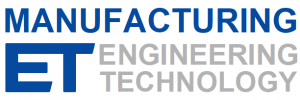EDM Video Lectures by Carl Sommer
Reading Assignment
- 19.1 Introduction to Electronic, Electrochemical, Chemical, and Thermal Machining Processes
- 19.4 Electrical Discharge Machining
Recommended Reading
- Electrical Discharge Machining. 2001, Elman C. Jameson and the Society of Manufacturing Engineers
- Study Guide – EDM
Outline
Classification
History of EDM
Types
Ram (Sinker)
Wire
Process Fundamentals
Factors Affecting Surface Finish
- Gap voltage at discharge
- Discharge Current
- Current “on time” – the time current flows
- Frequency
- Generally, the feed rate is inversely proportional to the finish quality
Dielectric Fluid
Functions
- Provide a path for the discharge of electric current.
- Cool the workpiece.
- Remove metal particles from the gap
Benefits of EDM Process
- EDM is a non-contact process that generates no cutting forces, permitting the production of small and fragile pieces
- Burr-free edges are produced
- Intricate details and superior finishes are possible
- EDM machines with built-in process knowledge allow the production of intricate parts with minimum operator intervention
- EDM can easily machine hard materials like hardened tool steel
Limitations
- low metal removal rates compared to chip machining
- lead time is needed to produce specific, consumable electrode shapes
Ram EDM Subsystems
- a DC power supply to provide the electrical discharges, with controls for voltage, current, duration, duty cycle, frequency, and polarity
- a dielectric system to introduce fluid into the voltage area/discharge zone and flush away work and electrode debris, this fluid is usually a hydrocarbon or silicone-based oil
- a consumable electrode, usually of copper or graphite
- a servo system to control in-feed of the electrode and provide gap maintenance
Additional Resources
EDM Today Magazine – Technical Articles
